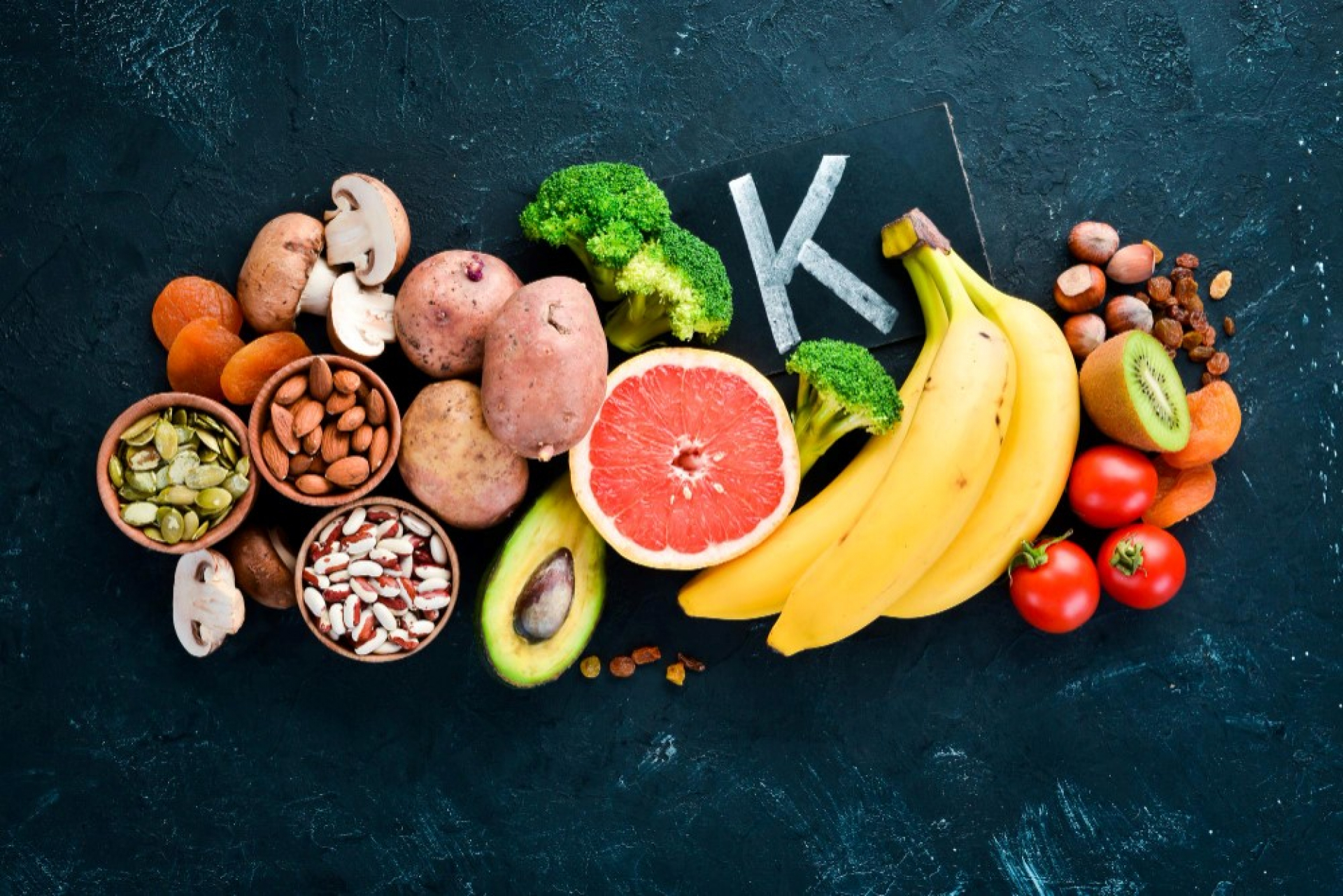When it comes to managing blood pressure, most people think about reducing sodium. But did you know increasing your potassium intake is just as crucial? Potassium for blood pressure is often overlooked, yet it plays a powerful role in achieving BP control naturally. This essential mineral helps maintain electrolyte balance, eases tension in blood vessel walls, and helps the body excrete excess sodium, making it a cornerstone of every heart-friendly diet.
Why Potassium Matters for Blood Pressure and Electrolyte Balance
Potassium is an essential mineral and electrolyte that directly impacts how your muscles contract, including your heart, and how fluids move across cell membranes. When potassium levels are in balance, your body efficiently flushes out excess sodium, reducing the strain on arteries.
How Potassium Supports BP Control Naturally:
- Relaxes blood vessel walls
- Helps kidneys eliminate sodium
- Reduces fluid retention
- Maintains heartbeat rhythm
- Supports overall electrolyte balance
The recommended daily potassium intake for adults is around 3,500–4,700 mg/day, depending on health status and activity level. But most people don’t even get half of that, making potassium for blood pressure an urgent dietary priority.
The Role of the Serum Potassium Test
The Serum Potassium Test is a blood test that measures the level of potassium in your bloodstream. It is a key diagnostic tool for evaluating electrolyte balance, especially in people with hypertension, kidney disorders, or those taking medications like diuretics or ACE inhibitors.
When is the Serum Potassium Test Recommended?
- If you have high or low blood pressure
- When taking BP medications that affect potassium levels
- If you are on a low-sodium or high-potassium diet
- To monitor heart or kidney conditions
- When experiencing symptoms like muscle weakness, cramps, or irregular heartbeat
Keeping your potassium within a healthy range ensures your diet and medications are working in synergy to support BP control naturally.
Top 15 Potassium-Rich Foods to Include in Your Blood Pressure Diet
Incorporating potassium foods into your diet doesn't require expensive supplements. Indian cuisine is naturally rich in many potassium-packed vegetables, fruits, pulses, and grains. Here are the best foods to include for natural electrolyte balance and BP control:
1. Bananas
A well-known source of potassium, one medium banana provides about 420 mg of potassium. It is also portable, affordable, and perfect as a mid-morning snack.
2. Spinach (Palak)
Cooked spinach is a powerhouse, offering over 800 mg per cup. It is perfect for curries, smoothies, or dals.
3. Sweet Potatoes
One medium sweet potato contains about 540 mg of potassium. They are filling, delicious, and naturally sweet.
4. Avocados
One whole avocado provides about 950 mg potassium. Add to salads or toast for a creamy, heart-healthy treat.
5. Beans and Lentils (Rajma, Chana, Masoor)
A cup of cooked lentils provides 700–800 mg potassium. Pulses are a staple in Indian households and essential for vegetarians.
6. Coconut Water
A hydrating, natural electrolyte drink with 600 mg potassium per cup. Ideal during hot weather or post-workout.
7. Pumpkin (Kaddu)
Loaded with potassium and low in calories. Great in curries or soups.
8. Tomatoes
Fresh tomatoes or homemade tomato puree deliver about 290 mg per 100g and are rich in lycopene, great for heart health.
9. Beetroot
One cup of cooked beets provides around 450 mg potassium and is known to support blood flow.
10. Yogurt (Dahi)
Not only a probiotic food, but also rich in potassium (around 570 mg per cup). Prefer plain, low-sodium varieties.
11. Pomegranate
Provides about 666 mg potassium per fruit, along with antioxidants that support arterial health.
12. Guava
One medium guava gives around 420 mg potassium and is also rich in vitamin C and fiber.
13. Mushrooms
Low in calories, high in potassium. One cup of cooked mushrooms = 550 mg potassium.
14. Muskmelon (Kharbuja)
A refreshing, potassium-rich fruit with over 400 mg per serving, great for hot climates.
15. Amaranth Leaves (Chaulai)
Underrated but potent; rich in iron and potassium, ideal for sabzis and stir-fries.
Sample One-Day Potassium-Boosting Indian Meal Plan
Here is how to design a day’s worth of meals focused on potassium for blood pressure and electrolyte balance, while still being low in sodium.
Morning Drink: Coconut water with soaked chia seeds
Breakfast: Masoor dal chilla with tomato chutney
Mid-Morning Snack: A banana or handful of pomegranate seeds
Lunch: Brown rice + palak dal + beetroot salad
Evening Snack: Plain yogurt + roasted pumpkin seeds
Dinner: Bajra roti + lauki curry + cucumber-tomato salad
Before Bed: Warm turmeric milk with a pinch of cinnamon
This plan provides 3,800–4,200 mg of potassium, within optimal range for BP control naturally.
When Too Much Potassium Can Be Harmful
While increasing potassium helps BP control naturally, excess potassium (hyperkalemia) can be dangerous, especially for people with:
- Chronic kidney disease
- Adrenal gland disorders
- Poorly controlled diabetes
- Those on potassium-sparing medications
Symptoms of high potassium include fatigue, numbness, irregular heartbeat, or even cardiac arrest in severe cases.
That is why it is important to check your levels via a Serum Potassium Test before making drastic dietary changes or starting supplements.
Potassium vs Sodium- The Balancing Act for Better BP
Potassium and sodium are like two sides of a scale, when one is too high, the other suffers. Most diets today are high in sodium and low in potassium, tipping the balance toward hypertension.
Increasing potassium foods while reducing sodium:
- Helps normalize electrolyte balance
- Supports vasodilation (widening of blood vessels)
- Decreases stiffness in arterial walls
- Enhances kidney function and sodium excretion
This synergy between potassium and sodium is a cornerstone of every effective blood pressure diet.
How Potassium Helps BP Control Naturally
Multiple studies confirm the role of potassium for blood pressure management:
- The DASH Diet (Dietary Approaches to Stop Hypertension) emphasizes high-potassium, low-sodium foods and shows an average BP drop of 8–14 mmHg.
- A 2013 meta-analysis published in the BMJ showed that increased potassium intake reduces both systolic and diastolic BP in hypertensive individuals.
- The World Health Organization (WHO) recommends increased potassium intake to reduce the risk of cardiovascular disease and stroke.
These findings reinforce the importance of electrolyte balance for heart health and the power of dietary potassium.
When to Take the Serum Potassium Test
Schedule a Serum Potassium Test if:
- You are starting a blood pressure diet with high potassium intake
- You are taking diuretics or RAAS blockers (ACE inhibitors or ARBs)
- You have chronic kidney disease or diabetes
- You experience symptoms like cramping, fatigue, or palpitations
Discuss your Sodium and Potassium levels together during your routine blood work for full electrolyte balance assessment.
Quick Tips to Add Potassium Foods Daily
- Add banana or guava to your mid-morning snack
- Replace packaged snacks with roasted chana or unsalted almonds
- Add spinach, amaranth, or pumpkin to lunch and dinner
- Choose dal-chawal or khichdi over packaged meals
- Blend yogurt-based smoothies with beetroot or banana
- Cook with fresh tomatoes instead of ketchup or canned paste
These small tweaks add up to big changes in your potassium for blood pressure strategy.
Potassium Monitoring Checklist
|
Habit |
Frequency |
Goal |
|
Track potassium-rich meals |
Daily |
Meet 3,500–4,700 mg target |
|
Check food labels for sodium |
Every meal |
Keep sodium under 2,300 mg |
|
Serum Potassium Test |
Every 6–12 months |
Ensure safe potassium range |
|
Home BP Monitoring |
2–3 times/week |
Track real-time improvements |
|
Log symptoms (fatigue, cramps) |
Weekly |
Catch signs of imbalance |
Potassium- The Missing Key to BP Control Naturally
If you have been watching your sodium but still struggling with hypertension, it may be time to shift your focus to potassium for blood pressure. A diet rich in potassium foods offers a natural, affordable, and effective way to support BP control naturally, without compromising flavor or cultural preferences.
With a balanced approach, guided by sodium and potassium monitoring, including a Serum Potassium Test, you will be better equipped to make lasting improvements to your heart health.
Action Plan:
· Add at least 2–3 potassium-rich foods daily.
· Request a Serum Potassium Test during your next check-up.
· Build meals that support electrolyte balance.
· Track BP changes with home monitoring.
· Consult your doctor before taking supplements.


